Happy feat: Fiordland penguin chicks zoo-hatched in global first
Not only are these recent hatchlings flippin’ cute, they could prove crucial to the survival of their species thanks to a world-first breeding program that is revealing new insights into how they live
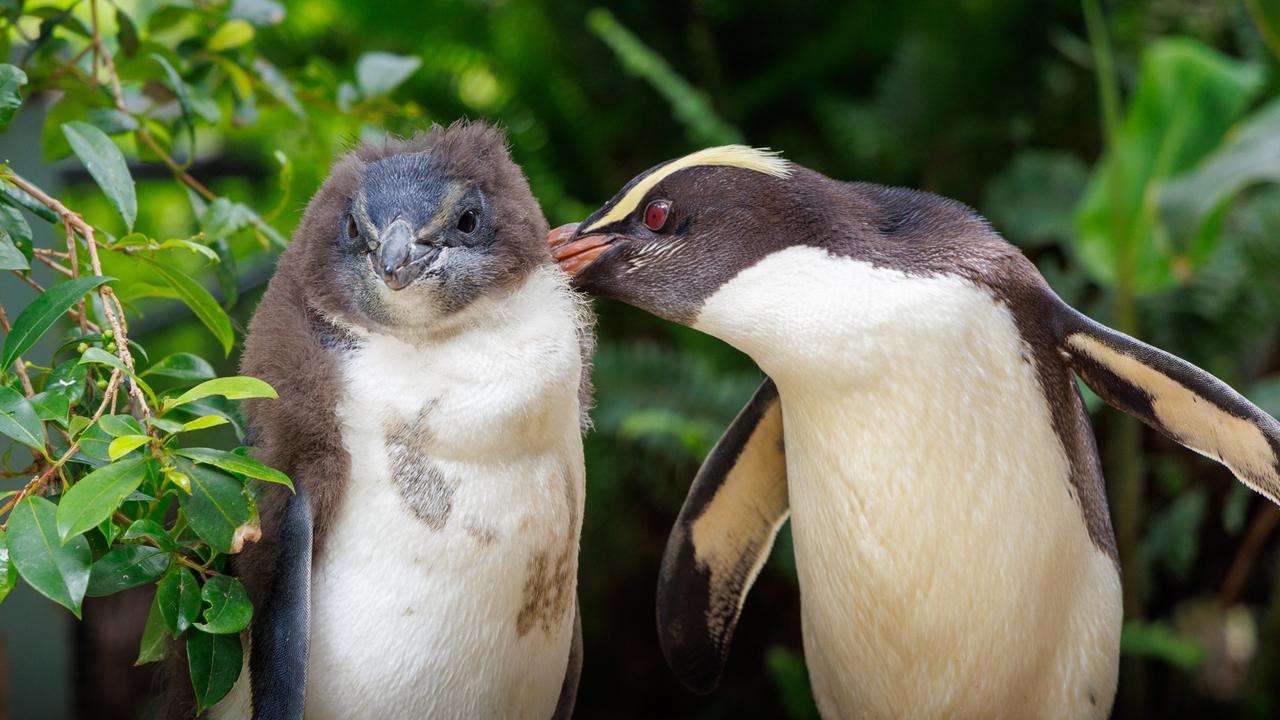
READING LEVEL: GREEN
Two baby penguins born at Taronga Zoo are thriving after hatching in a world-first for their species.
The Fiordland penguin chicks were born through the only zoo-breeding program in the world for the threatened species.
The two chicks have just turned 13-weeks and 10-weeks-old, with the eldest fully fledged* and dipping its flippers in the zoo’s seawater habitat*, while the younger chick completes the moulting* of fluffy down before leaving the nest and testing out its swimming skills.
Fiordland penguins (Eudyptes pachyrhychus), also known as Tawaki or Fiordland crested penguins, are listed as a threatened species* and are mainly found in New Zealand.
“Taronga’s Fiordland penguin colony consists of five adults, all rescued from the wild and now … the world’s only zoo population. We are so privileged to look after, learn from and breed this vulnerable* species”, said Taronga senior marine keeper Jo Walker.
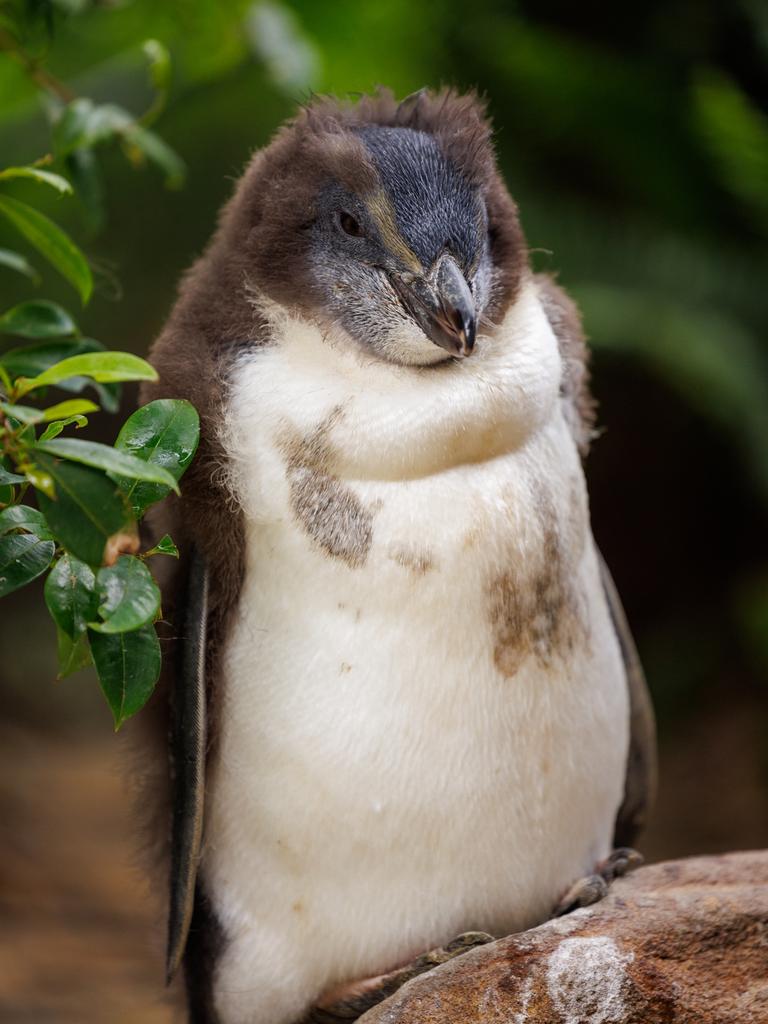

“The Fiordland penguin breeding program at Taronga is very important because of their vulnerable status in the wild. By being able to observe what they do in their burrows*, how and what they feed their chicks, is all groundbreaking information that has never been observed before”.
Through the zoo-based breeding program, the team at Taronga are able to monitor the breeding and nesting behaviours of the birds using CCTV to find out more about the species, “which in turn helps their cousins in the wild”, Ms Walker said.
ABOUT TARONGA’S FIORDLAND PENGUIN FAMILY
Four of Taronga’s Fiordland penguins were found malnourished* on Australian beaches and required treatment at Taronga’s Wildlife Hospital. Another female joined Taronga’s colony in 2017 after receiving treatment from Wellington Zoo’s Veterinary Hospital for extensive wounds. To prevent potential spread of disease to the shrinking wild population, these five rescued penguins were transported to Taronga Zoo Sydney, where they could be used to form the world’s first zoo-based breeding colony*. The breeding program aims to increase population numbers and guide conservation* work.
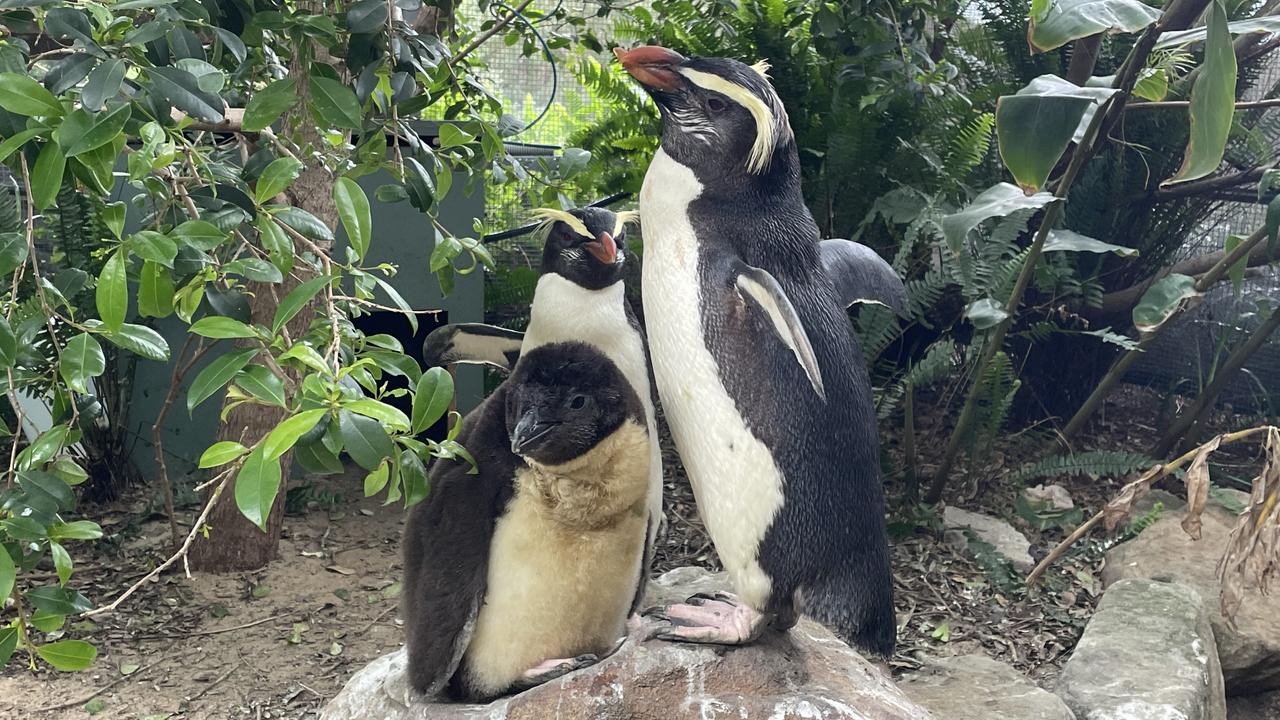
The group was split into two breeding pairs, with Ed and Dusky pairing up and successfully hatching their first egg, and long-term partners Munro and Moeraki successfully hatching their second-ever chick and raising it through to fledging* age.
In the 2023 breeding season, Munro and Moeraki hatched their first-ever chick, which sadly passed away before fledging.
Parents share incubation* duties over 31-36 days until the chick hatches, then continue parenting duties to feed and protect the chick in the nest.
Following close monitoring, Taronga marine keepers recorded data throughout the breeding season, learning never-before-seen behaviours that will continue to help in recovery programs for the species.
As Munro and Moeraki’s chick gains confidence and develops its swimming skills in the Zoo’s Great Southern Oceans seawater habitat, the marine keepers expect Ed and Dusky’s 10-week-old chick to remain behind-the-scenes in the zoo’s breeding facility until it loses its down-feathers under the shelter and security of its nest box.
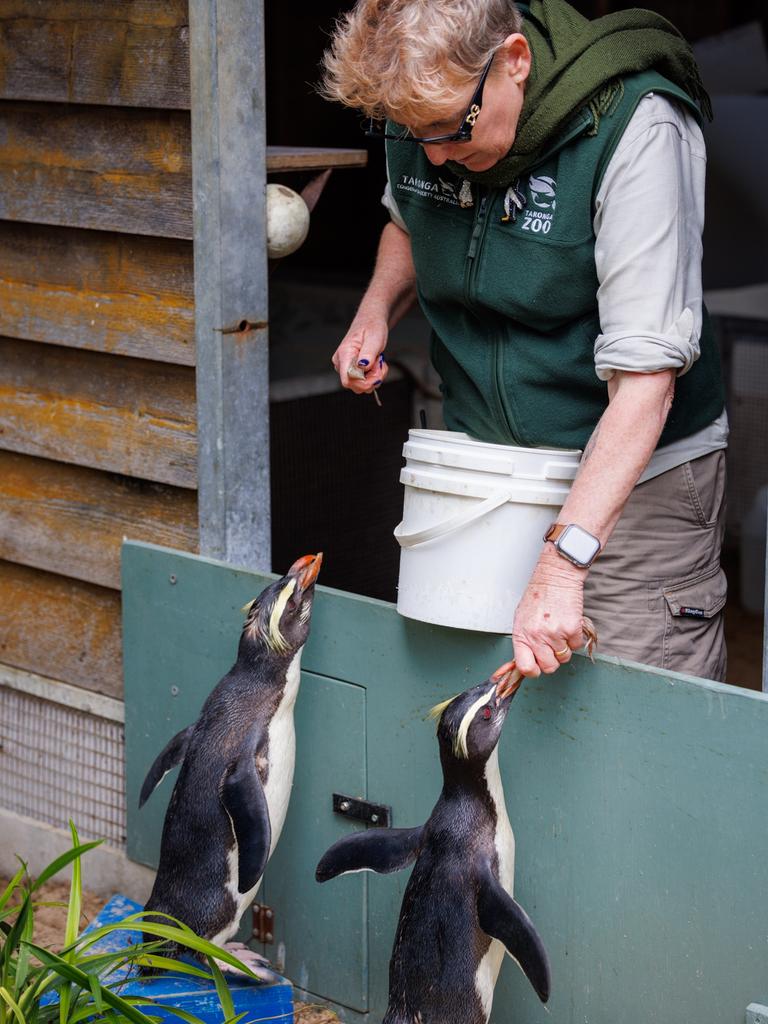
Visitors can see the zoo’s mixed penguin colony, including the five rescue adult Fiordland penguins and the little penguin colony, at Taronga’s daily 2:40pm Penguin keeper talk.
ABOUT FIORDLAND PENGUINS
Fiordland penguins are a rare species of crested penguin, with a large yellow eyebrow stripe. There is an estimated population of 2500-3000 breeding pairs remaining in the wild.
They are generally secretive and do not form large colonies like other penguin species, instead nesting in remote caves, rock faces, and among tree roots in New Zealand’s southwestern South Island, including the Fiordland region for which they are named, Stewart Island, and several offshore islands. Outside of breeding season they travel across New Zealand into deeper ocean, and occasionally as far as the Australian mainland as they forage*.
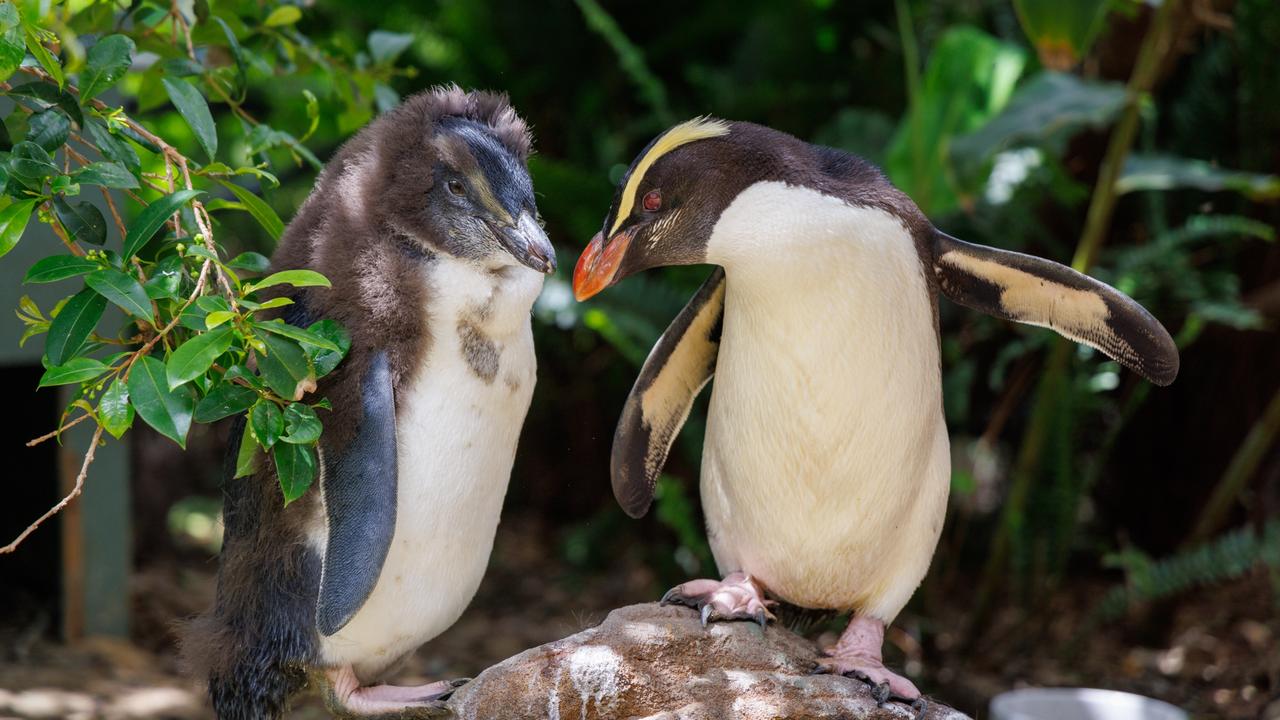
Threats include habitat destruction and introduced predators such as rats, stoats and ferrets, which prey on penguin chicks and eggs.
Fiordland penguins also get tangled up in fishing nets and become sick from eating plastic rubbish found floating in the ocean.
DIFFERENT PENGUIN SPECIES
They share the same black and white appearance, but according to Penguins International, there are 18 different species of penguins – all with unique characteristics.
Here are a few of the different species.
Adelie penguins – Growing to around 70cm tall, Adelie penguins have long tail feathers and live for 15-20 years. They have a population that is increasing, giving them a conservation status of “least concern”.
Emperor penguins – These regal birds with yellow patches on their heads are the largest penguins both in mass and height, measuring up at about 1.2m tall and 32-40 kg in weight. They live in Antarctica and have a conservation status of “near threatened”.
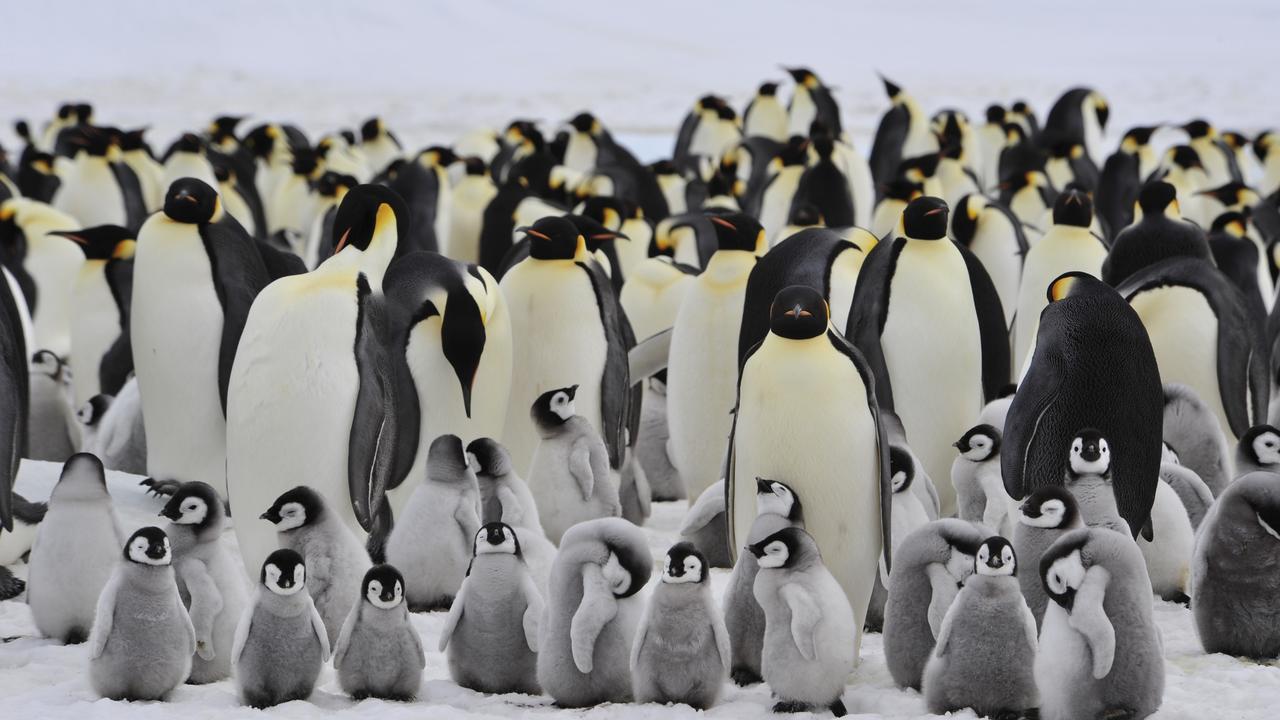
King penguins – The second largest penguin and similar in appearance to the Emperor penguin, the King penguin is 90 cm in height and 15-16kg in weight and has an increasing population size.
Macaroni penguins – These cute little guys have yellow crest feathers that part in the middle of their head and are just 3.1-5kg in weight, measuring up to 71cm tall.
Southern rockhopper penguins – Looking like the punk rockers of penguins, this species has spiky black and yellow feathers on top of its head and measures 45-58 cm tall and just 2.8-3kg in weight. Its conservation status is “vulnerable”.
WATCH THE VIDEO
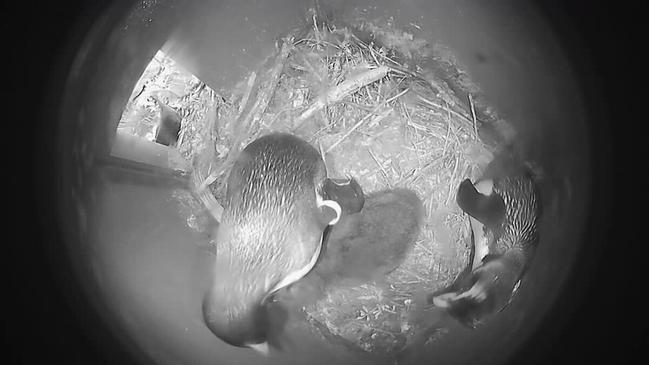
POLL
GLOSSARY
- fledged: when a baby penguin loses all its fluffy feathers and has all its adult feathers instead
- habitat: animal enclosure designed to mimic its natural environment
- moulting: losing its feathers
- threatened species: species in danger of becoming extinct
- vulnerable: in danger
- burrows: holes used by the penguins as nests
- malnourished: sick from lack of eating enough healthy food
- breeding colony: a group of animals kept together for the purpose of breeding
- conservation: working to protect and ensure the survival of animal or plant species
- fledging: period of chicks being reared by parents until ready for independence, process of young birds growing feathers and for some learning to fly
- incubation: keeping an egg warm while the baby bird inside develops before hatching
- forage: looking for food
EXTRA READING
Python patient’s road to recovery
Feathered friend rescues cockatoo
Young humpback’s harbour rescue
QUICK QUIZ
1. How many breeding pairs of Fiordland penguins are left in the wild?
2. How is the breeding program at Taronga Zoo helping conservation work?
3. What are some of the threats facing Fiordland penguins?
4. What is the largest species of penguin?
5. How tall are Macaroni penguins?
LISTEN TO THIS STORY
CLASSROOM ACTIVITIES
1. Fiordland penguin life cycle
In the news story, we read about some of the stages that form a Fiordland penguin’s life cycle. Read the article and highlight these details. Research further to fill in any information gaps, then draw and label a diagram to show the life cycle.
Time: allow 25 minutes to complete this activity
Curriculum Links: English; Science
2. Extension
Based on what you have read about Fiordland penguins, design a suitable zoo enclosure that includes all of the things required to keep them safe and happy.
Time: allow 20 minutes to complete this activity
Curriculum Links: English; Science
VCOP ACTIVITY
Read this!
A headline on an article – or a title on your text – should capture the attention of the audience, telling them to read this now. So choosing the perfect words for a headline or title is very important.
Create three new headlines for the events that took place in this article. Remember, what you write and how you write it will set the pace for the whole text, so make sure it matches.
Read out your headlines to a partner and discuss what the article will be about based on the headline you created. Discuss the tone and mood you set in just your few, short words. Does it do the article justice? Will it capture the audience’s attention the way you hoped? Would you want to read more?
Consider how a headline or title is similar to using short, sharp sentences throughout your text. They can be just as important as complex ones. Go through the last text you wrote and highlight any short, sharp sentences that capture the audience.

